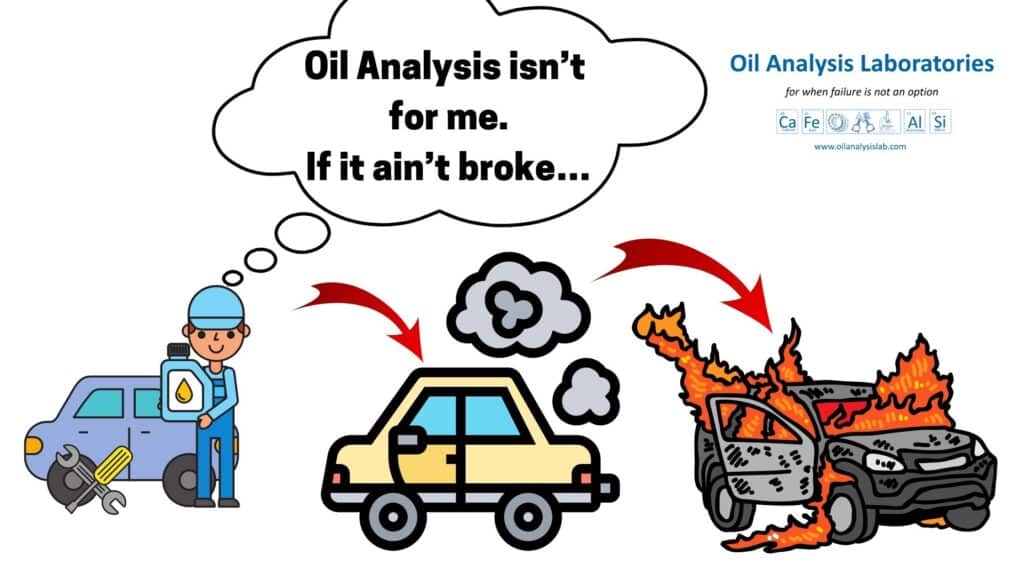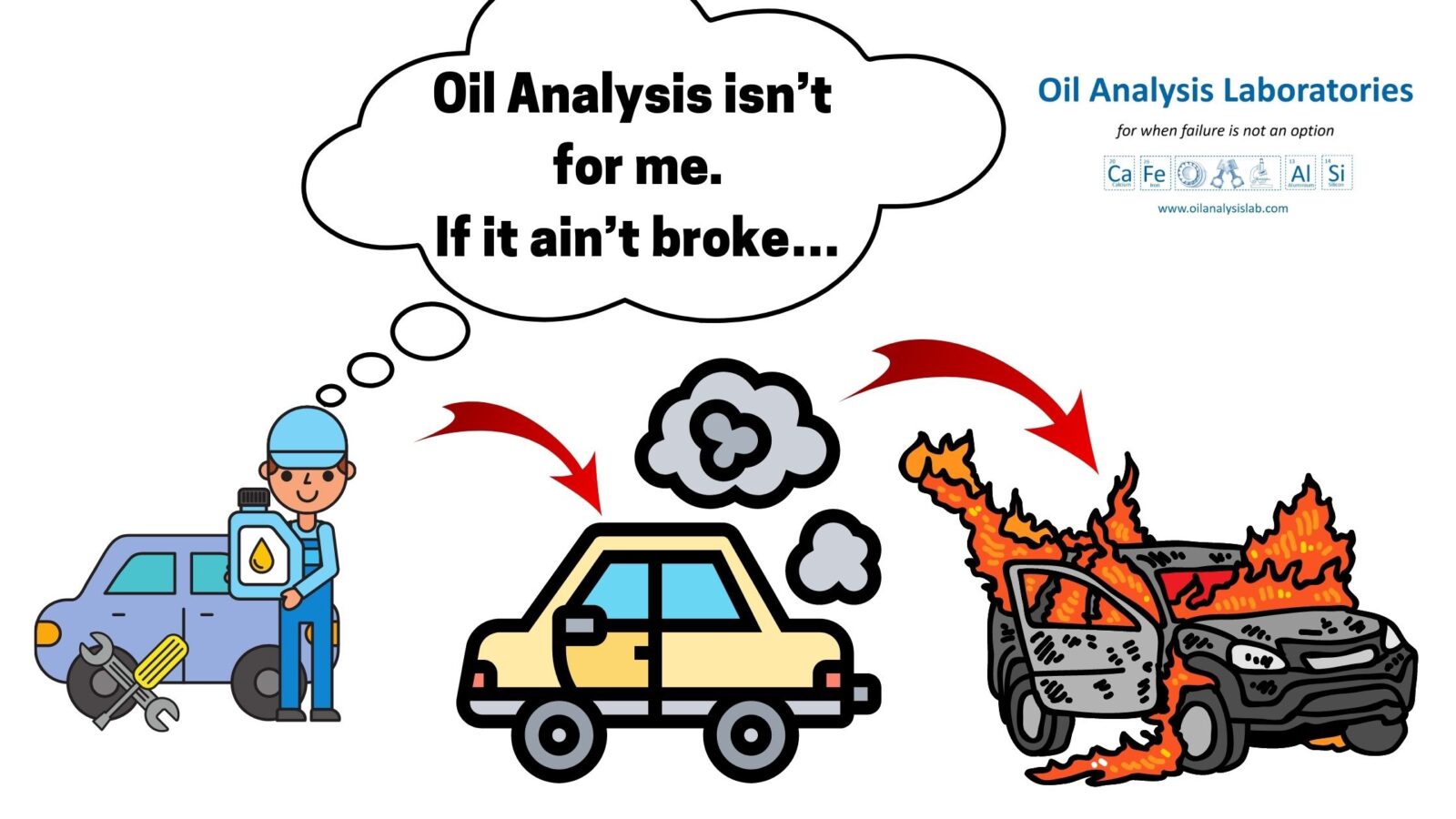We have all heard the phrase if it ain’t broke don’t fix it. It’s a common excuse people tell me when I ask why they don’t do oil analysis yet.
They are often surprised when I tell them I agree with them. Just I have a different opinion at what point I call something broken. Is a fuel leak issue a problem when we notice a large viscosity drop at the lab, the point the car struggles to start and is making black smoke or the point the engine fails and it catches fire. Technically all 3 stages are valid times to call something broken depending on your perspective. However, if it was my machine I personally would rather solve the problem early on MY time schedule rather than wait for the machine to make me do something (at the most inconvenient time) or even put me and others at risk of harm. We all know solving a leaky injector costs less than replacing a whole engine or even whole vehicle and it also means your time and safety are saved too.

Hence it is worth considering the different methods of maintenance and how they they work for you.
Run to failure (if it ain’t broke don’t fix it)
This approach is ideal for things that are:
- Very very Cheap
- Easily replaceable and often cheaper to replace than repair
- Very little downtime
- No safety implications from a failure.
A simple example of this is a pencil you write with. I wouldn’t spend a lot of money on doing loads of condition monitoring and fracture risk studies to identify when the pencil lead may break. If it breaks I can either sharpen it (repair it) or pickup a new pencil from my pencil case and continue what I’m doing relatively hassle free.
Other examples this can apply to are things like lightbulbs that people only tend to replace when they break.
Preventive (let’s replace it now as it might break in the future)
This involves doing something before a likely failure. Good examples of this are to:
- Change car every 3 years before it’s MOT. That is statistically where an increase in failures is likely to occur. However, anyone who has bought a new car or machine will know that you are not always guaranteed zero problems in the first 3 years.
- General maintenance practices such as oil changes, filter changes etc.
Overall preventative maintenance is better than no maintenance and you get a 2 to 4 times return on investment with this type of approach compared to run to failure. The problem is that it is very wasteful changing parts that have lots of life in them still. A good example is an oil change that 95% of the time is too early or too late based on time based changes. Equally, things fail early. For example I just upgraded a PC in the lab a couple months back and the power pack blew on it after 3 months of use. Way earlier than the 3 year warranty it came with. So time based maintenance is only really a best guess.
Condition based (know the facts with no assumptions)
This is the best return on investment with a 10x return compared to run to failure. Surprisingly you may not realise that you actually already do this without even knowing it in every day life. For example:
- You check your tyres have enough tread. You don’t replace your tyres after every journey and you don’t do a tire change every 50,000 miles or only when you start skidding on the road. You assess the condition and if the tread looks worn you replace. This is actually a legal requirement in the UK.
- MOT test. This starts after 3 years in the UK, but starts to assess the condition of your car and it’s road-worthiness. This is also a legal requirement in the UK.
- You have antivirus software on your computer to detect when there is a problem so you can prevent spread.
- You most likely will have done a covid test (depending how long in the future this article is read this may not be topical anymore – hello 2057 readers). Even if we no longer discuss covid for future readers you may have had a blood test or other medical test at some point to check your own health.
The advantage of condition based is it makes no assumptions. It actually gives you the information to make the decision. That makes sense surely.
In all other environments it does make sense, but for some reason oil changes we still seem to work on time based most of the time. If I was to change the car for your body you would have a different opinion if your doctor came and said, “hello sir, you are getting a certain age now, so we are going to replace your hips and perform a heart bypass and for good measure replace the lenses in your eyes.” When you ask “have I got arthritis of the hips, blocked coronary arteries in my heart and cataracts of the eyes” the doctor replies “I don’t know, but the handbook says to do all this years scheduled maintenance”. When you put it in these terms it seems stupid doesn’t it, hence why testing your oil is important.

If you would like to find out more about oil analysis so you get the facts on the condition of your machinery get in touch below using the contact us button.


